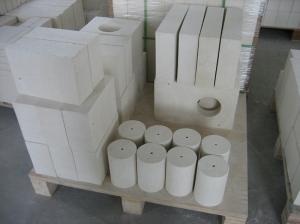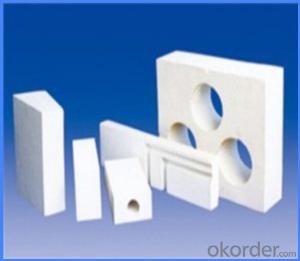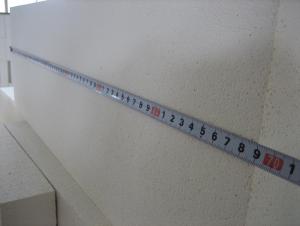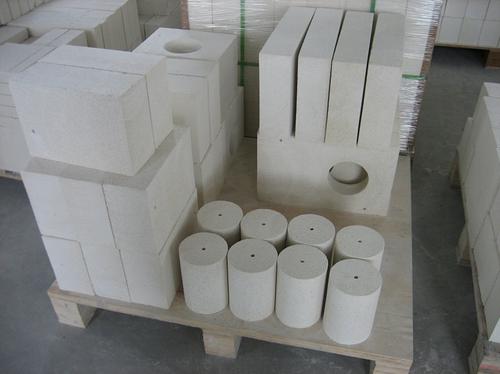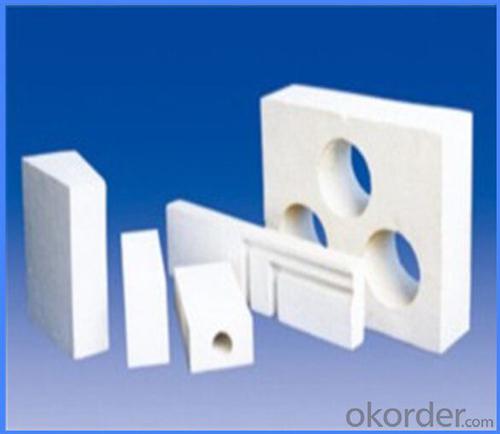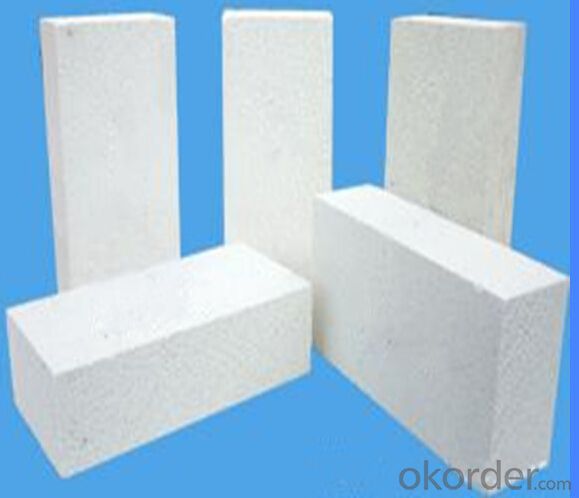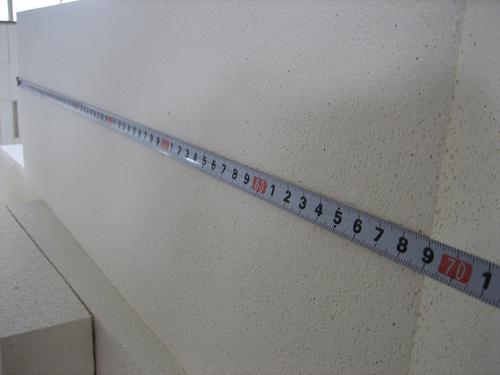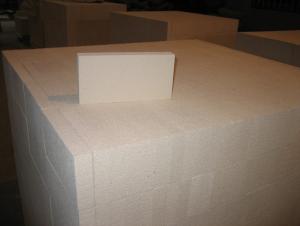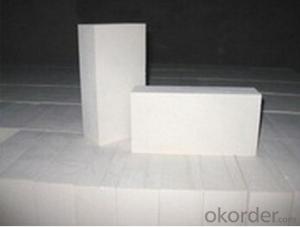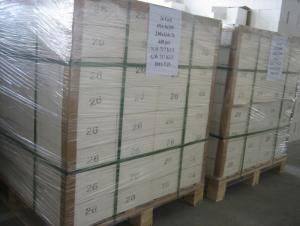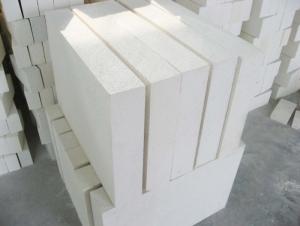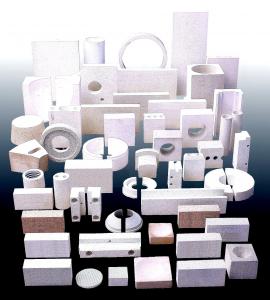Insulating Fire Brick - Refractory Mullite Insulating Refractory Brick JM 35
- Loading Port:
- Shanghai
- Payment Terms:
- TT OR LC
- Min Order Qty:
- 20 m.t.
- Supply Capability:
- 20 m.t./month
OKorder Service Pledge
OKorder Financial Service
You Might Also Like
Okorder series heat insulation brick
Okorder series thermal insulation brick is an effective, energy saving, low carbon, environmental protection advanced, according to the ASTM standard manufacturing products. Okorder series products have all kinds of materials in the field of metallurgy, industrial furnaces, aluminum, the best Li Ning petrochemical and insulation, electric power and glass ceramics. They can be used as part of an insulation or not to melt. Products have been widely used in the following furnace, achieved satisfactory results.
Application of heat preservation brick
Metallurgical Industry: blast furnace, hot blast furnace, heating furnace, etc..
Petrochemical Industry: ethylene cracking furnace, hydrogen furnace, the main furnace, heating furnace, etc..
Ceramic industry: roller kiln, kiln, etc..
Glass industry: glass furnace regenerator, etc.
Carbon industry: carbon furnace, etc..
Aluminum electrolysis industry: aluminum reduction cell, etc.
Other industries: tunnel kiln, shuttle kiln, etc..
Advantages of heat insulation brick
Low thermal conductivity: many air holes will bring good thermal insulation effect, energy saving.
High crushing strength: high crushing strength, volume stability.
Low heat storage: small heat storage, absorb more heat, energy-saving effect is obvious.
Chundu: High-speed Rail, low content of alkali metal impurities.
Accuracy: the size of the brick machining precision, cutting and grinding the special shape, speed up the brick.
Technical Data
ITEM | GJM30 | GJM28 | GJM26 | GJM23 |
Classification Temperature, ℉/℃ | 3000/1650 | 2800/1540 | 2600/1430 | 2300/1260 |
Bulk Density,g/cm³ | ≤1.0 | ≤0.9 | ≤0.8 | ≥0.5 |
Reheating Linear Change, % | ≤0.9 (1550℃,12 h) | ≤0.8 (1510℃,12 h) | ≤0.7 (1410℃,12 h) | ≤0.5 (1230℃,12 h) |
Al2O3 Content, % | ≥75 | ≥65 | ≥55 | ≥45 |
Fe2O3 Content, % | ≤0.5 | ≤0.6 | ≤0.7 | ≤1.0 |
Thermal Conductivity: | ||||
800℃, w/m.k | ≤0.39 | ≤0.37 | ≤0.35 | ≤0.18 |
1000℃, w/m.k | ≤0.43 | ≤0.41 | ≤0.39 | ≤0.20 |
1200℃, w/m.k | ≤0.48 | ≤0.46 | ≤0.43 | --- |
Insulating brick
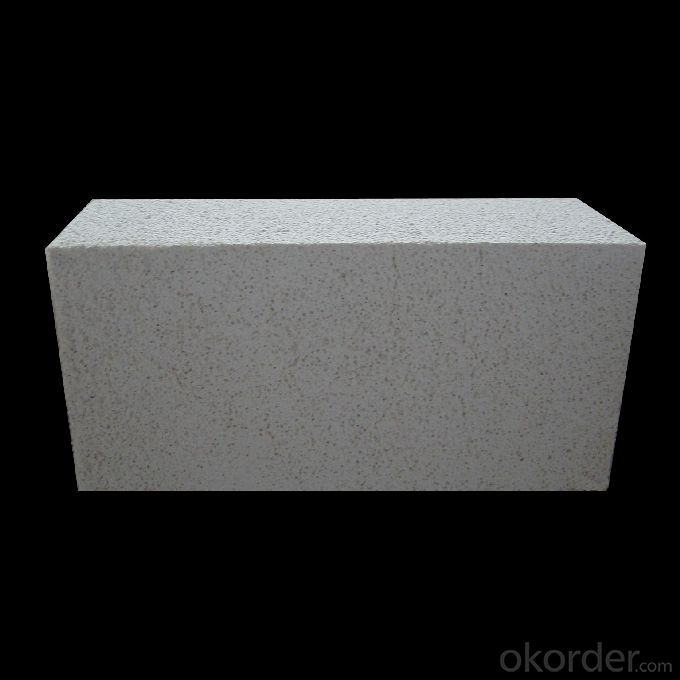
- Q: Are insulating fire bricks resistant to abrasion or erosion?
- Yes, insulating fire bricks are resistant to both abrasion and erosion.
- Q: How do insulating fire bricks perform in terms of thermal stability?
- Insulating fire bricks boast exceptional thermal stability, renowned for their ability to endure extreme temperatures while providing insulation in diverse industrial settings. Composed of lightweight refractory materials with low thermal conductivity, these bricks proficiently capture and retain heat. A prominent attribute that distinguishes insulating fire bricks as an optimal choice for thermal insulation is their capacity to maintain structural integrity even under the harshest temperature conditions. They exhibit remarkable resistance to thermal shock, enabling them to endure abrupt temperature fluctuations without succumbing to cracks or breakages. Consequently, they prove invaluable in applications such as furnaces, kilns, and other environments with elevated temperatures. Moreover, insulating fire bricks possess a minimal coefficient of thermal expansion, ensuring that they undergo negligible expansion or contraction when exposed to heat. This characteristic safeguards the bricks' shape and prevents the formation of cracks or gaps due to thermal stress. In terms of thermal stability, insulating fire bricks excel in insulation properties. They possess a high insulating value, effectively diminishing heat loss and conserving energy. This quality proves advantageous in situations that necessitate consistent temperature maintenance, as it minimizes heat transfer and enhances overall energy efficiency. In summary, insulating fire bricks exhibit remarkable thermal stability, thanks to their capacity to endure high temperatures, resist thermal shock, and offer efficient insulation. These qualities establish them as a dependable choice for a wide range of industrial and commercial applications.
- Q: Do insulating fire bricks have good mechanical strength?
- Insulating fire bricks generally have moderate mechanical strength compared to regular fire bricks. While their main purpose is to provide excellent thermal insulation, they are still able to withstand some amount of mechanical stress. However, it is important to note that their mechanical strength may not be as high as other types of fire bricks, which are specifically designed to withstand heavier loads and abrasion. Therefore, if the application requires both high insulation and superior mechanical strength, it might be necessary to consider using a combination of insulating fire bricks and regular fire bricks to achieve the desired outcome.
- Q: What is the typical lifespan of an insulating fire brick?
- The typical lifespan of an insulating fire brick can vary depending on various factors such as the quality of the brick, the temperature it is exposed to, and the frequency of thermal cycling. However, on average, insulating fire bricks can last anywhere from 5 to 20 years.
- Q: Can insulating fire bricks be used for insulation in steam pipes?
- Yes, insulating fire bricks are a suitable option for insulation in steam pipes. These bricks are specifically designed to withstand high temperatures and provide excellent thermal insulation. They have low thermal conductivity, which means they prevent the transfer of heat effectively. This property makes them ideal for insulating steam pipes, as it helps to minimize heat loss and maintain the temperature of the steam inside the pipes. Additionally, insulating fire bricks are lightweight and easy to install, making them a convenient choice for insulating steam pipes.
- Q: What is the compressive strength of insulating fire bricks?
- The specific composition and manufacturing process of insulating fire bricks can cause variations in their compressive strength. Generally, these bricks have a compressive strength ranging from 1 to 10 MPa. This range is comparatively lower than that of other types of bricks due to their lightweight and porous nature. This design allows them to offer exceptional thermal insulation properties. It is worth noting that the compressive strength of insulating fire bricks may not be as significant as it is for structural bricks. Their primary purpose is to provide insulation rather than structural support.
- Q: Can insulating fire bricks be used for insulation in hot water tanks?
- Indeed, insulating fire bricks are suitable for insulating hot water tanks. Their superior thermal insulation properties deem them an optimal selection for such purpose. By utilizing these bricks, heat loss from the hot water tank can be efficiently prevented, consequently prolonging the water's temperature retention. Furthermore, these bricks exhibit exceptional durability and can endure high temperatures without fracturing or shattering, rendering them a dependable option for hot water tank insulation.
- Q: Do insulating fire bricks require any maintenance?
- Yes, insulating fire bricks typically require minimal maintenance. They are designed to be durable and withstand high temperatures, so they generally do not need any special care or regular maintenance. However, it is important to inspect them periodically for any signs of damage or wear and tear, and if any issues are identified, they should be repaired or replaced to ensure their effective insulation properties.
- Q: Can insulating fire bricks be used in the construction of refractory coatings?
- Yes, insulating fire bricks can be used in the construction of refractory coatings. Insulating fire bricks are designed to have low thermal conductivity, which means they are excellent at preventing heat transfer. This makes them ideal for use in refractory coatings, which are used to protect structures from high temperatures. Refractory coatings are applied to surfaces that are exposed to extreme heat, such as furnaces, kilns, and chimneys. These coatings provide a layer of insulation that helps to retain heat, prevent damage to the underlying structure, and improve energy efficiency. Insulating fire bricks can be used as a base layer in the construction of refractory coatings. They can be stacked and bonded together to form a solid and heat-resistant surface. This layer acts as a barrier to prevent heat from transferring through to the underlying structure. In addition to their low thermal conductivity, insulating fire bricks also have other properties that make them suitable for use in refractory coatings. They have high temperature resistance, meaning they can withstand the extreme heat generated in industrial applications. They are also lightweight and easy to handle, making them convenient to install and work with. Overall, insulating fire bricks are a reliable option for constructing refractory coatings. They provide excellent insulation and protection against high temperatures, making them a valuable component in the construction of heat-resistant structures.
- Q: Are there any differences between insulating bricks and refractory bricks?
- As the name suggests, the main role of insulating brick is used to preserve heat and reduce the loss of heat. Such as: Molai S; and the firebrick is mainly used to withstand flame burn.
Send your message to us
Insulating Fire Brick - Refractory Mullite Insulating Refractory Brick JM 35
- Loading Port:
- Shanghai
- Payment Terms:
- TT OR LC
- Min Order Qty:
- 20 m.t.
- Supply Capability:
- 20 m.t./month
OKorder Service Pledge
OKorder Financial Service
Similar products
Hot products
Hot Searches
Related keywords
